If you’re a West Hartford homeowner, summer lawn and garden care requires more than watering once in a while. From mowing high and watering smart to pruning flowering plants and protecting mature trees, seasonal upkeep can be complex. This guide from Troutbrook Arborists walks you through:
Proper lawn care during heatwaves
How to care for small plants, shrubs, fruit plants, and large trees
Dealing with pests like grubs and mildew
Why expert help leads to healthier, longer-lasting landscapes
Whether you want to DIY with confidence or hand off the work, these tips will keep your yard thriving through summer.
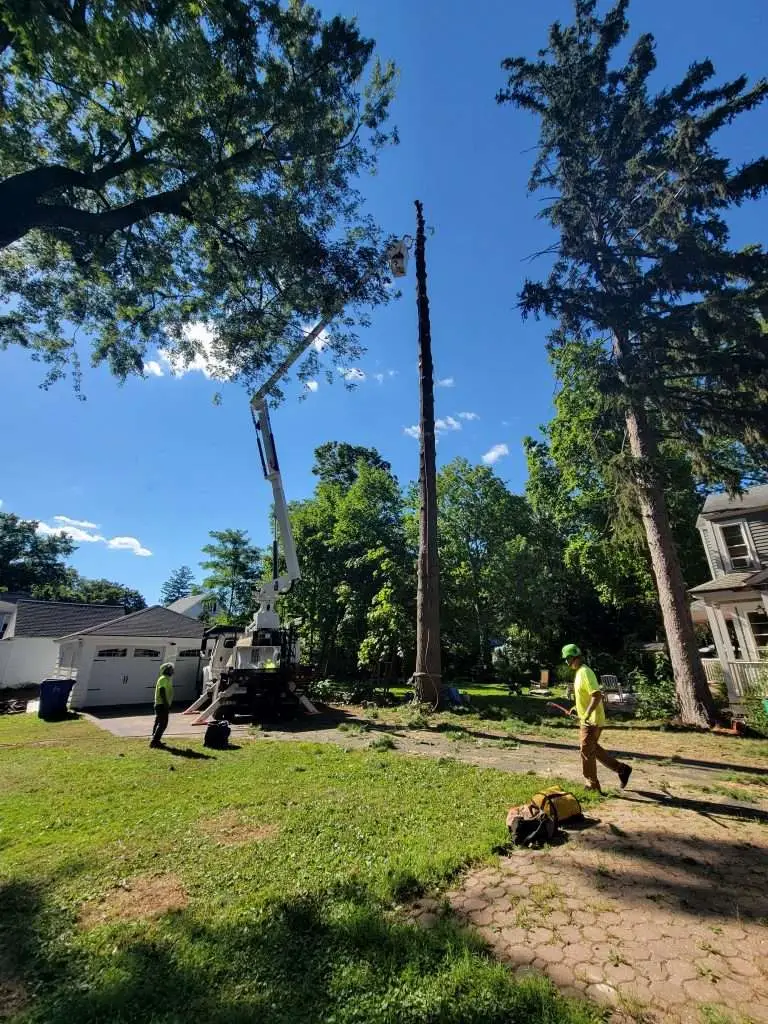
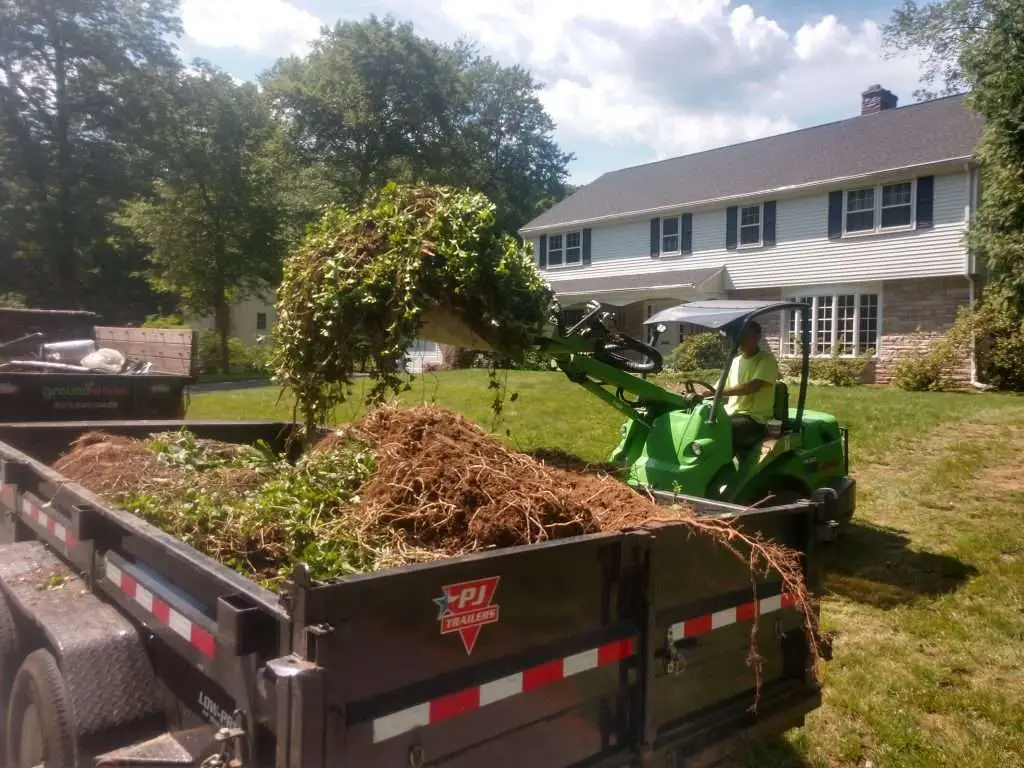
Connecticut summers bring more than just warm weather—they bring challenges for every part of your yard. From sun-scorched lawns to thirsty shrubs and heat-stressed trees, maintaining a healthy landscape takes planning, time, and the right techniques.
If you’re in West Hartford or nearby towns, your property likely includes a mix of grass lawns, flowering plants, shrubs, fruit-bearing trees, and mature shade trees. Each requires specific care to survive and thrive through the heat and humidity of New England’s peak season.
That’s where Troutbrook Arborists comes in. As West Hartford’s trusted experts in seasonal lawn and tree care, we help homeowners maintain landscapes that are not only beautiful—but built to last.
Your lawn is more than just ground cover—it’s the foundation of your entire landscape. A healthy lawn cools the yard, prevents erosion, and boosts curb appeal. But in summer, it’s also the first area to show stress from drought, overuse, and disease.
✅ Mow Higher, Stress Less
Set your mower blades to 3 to 4 inches. Taller grass shades soil, reducing evaporation and protecting roots from sun damage. Also, keep mower blades sharp—dull blades tear the grass, making it more vulnerable to pests and disease.
💧 Water Deeply—but Not Too Often
Lawns in West Hartford benefit from 1 to 1.5 inches of water per week, preferably applied in one or two deep sessions rather than frequent shallow watering. Early morning is the best time—watering at night can encourage fungal growth.
Pro Tip: If footprints remain visible on your lawn, it’s likely too dry.
🚫 Skip the Summer Fertilizer
Fertilizing during intense summer heat can burn your lawn. Wait until late summer or early fall to fertilize, when temperatures drop and grass is ready to absorb nutrients again.
🌿 Consider Mulching and Overseeding
Strategic mulching around lawn edges and beds can prevent weeds and help retain moisture. If your lawn is looking patchy or compacted, aeration and overseeding (planned for early fall) can revitalize it.
For tailored treatments and seasonal upgrades like mulching, edging, and turf care, our team offers complete lawn and mulching services designed for West Hartford soils and weather conditions.
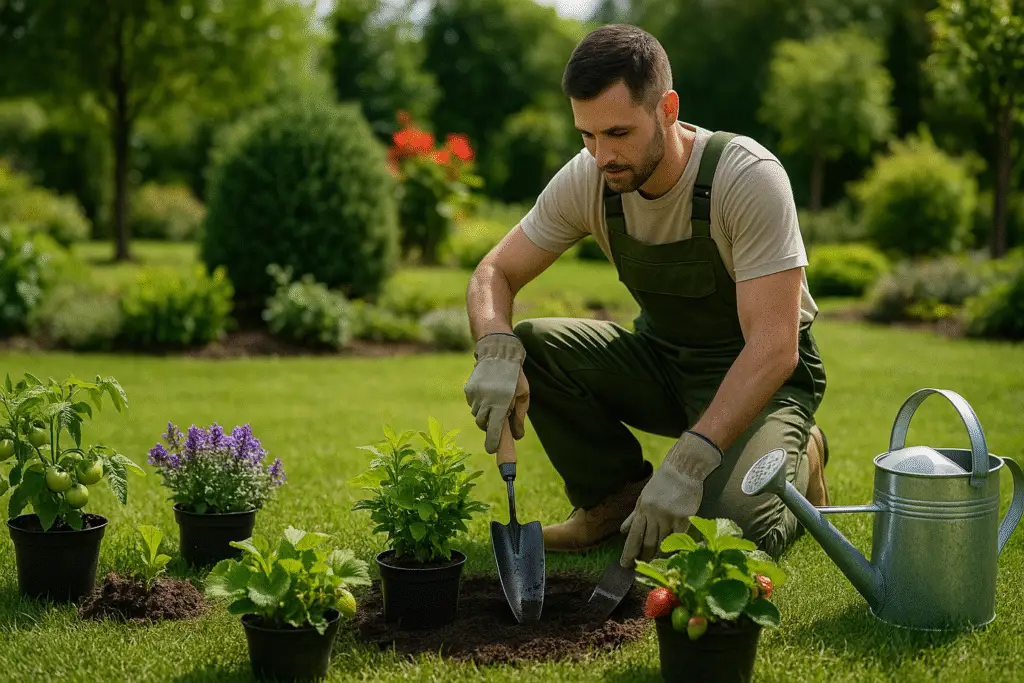
Every garden has layers—and each one responds differently to heat, sun, and stress. Here’s how to approach summer care based on plant type and size:
🌱 Small & Mid-Sized Plants
Plants in beds, borders, and containers often have shallow roots, which makes them vulnerable during dry spells. Water regularly (2–3 times a week), and make sure containers have proper drainage. Consider shade cloth or moving potted plants during extreme heatwaves.
🌸 Flowering Plants
Deadheading is essential—removing spent blooms encourages continued flowering and reduces energy waste. Use compost-based fertilizers sparingly, and water early in the morning to avoid fungal issues.
🍓 Fruit Plants (e.g. blueberries, figs, tomatoes)
These are both delicate and high-maintenance in heat. Netting may be needed to deter birds, and regular checks for pests like aphids or spider mites are critical. Ensure plants are staked or supported to handle fruit weight.
🌿 Shrubs & Mid-Sized Trees
Mulch around the base (2–4 inches deep, not touching the trunk) to retain moisture. Prune lightly only after flowering. Monitor for signs of drought: wilting, browning edges, or premature leaf drop.
🌳 Large Trees
These are the backbone of your yard—and summer is the time to watch for stress signs like leaf scorch or dead limbs. Avoid heavy pruning now, but inspect for structural issues or disease. Our tree and shrub care service includes canopy checks, soil health reviews, and seasonal advice.
Note: Trees often suffer silently. If you notice yellowing, cracks in bark, or limb dieback, call a licensed professional.
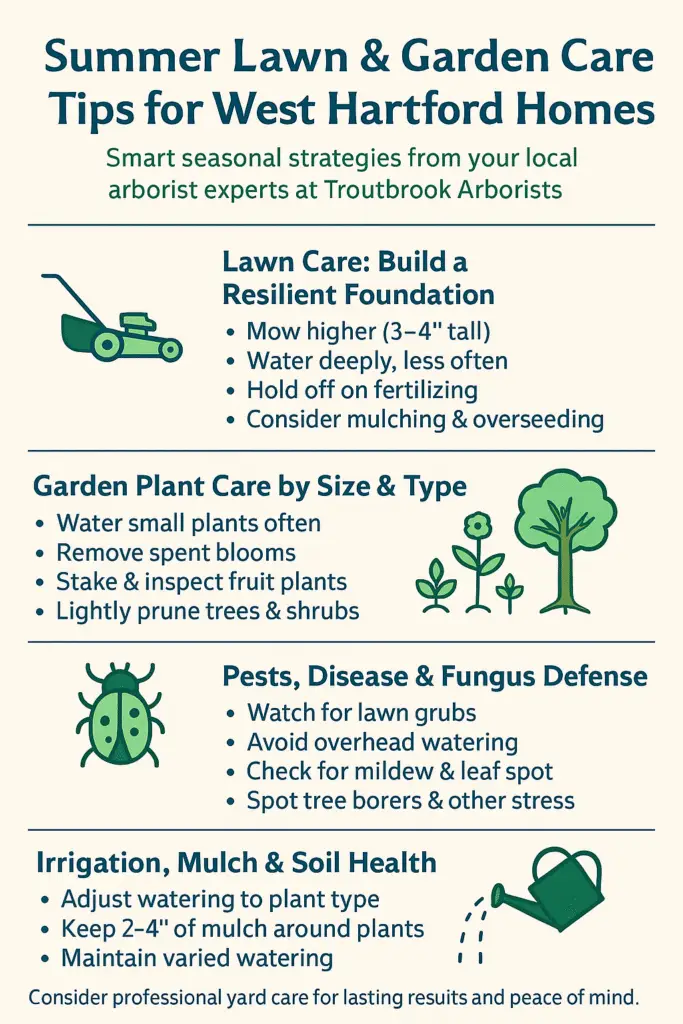
West Hartford summers bring the heat—and with it, common threats to lawns and gardens.
🪲 Lawn Grubs & Chinch Bugs
These pests live in the soil and feed on grass roots, leaving brown patches that peel back like carpet. Chinch bugs damage by sucking out plant fluids. If you notice unusual wilting despite watering, they may be the cause.
🦠 Powdery Mildew & Leaf Spot
Especially common on flowering and fruiting plants, these fungi thrive in warm, humid air. Watering at the base, improving airflow, and timely pruning help reduce the risk.
🐛 Tree Threats: Borers, Scales, and Beetles
Insects can tunnel into tree bark or feed on sap, leaving trees vulnerable to disease and dieback. This damage often goes unnoticed until it’s advanced. Professional inspections from a licensed and accredited team like ours ensure early detection and treatment.
Pro Insight: DIY pest control often treats the symptom, not the cause. Our team uses targeted, eco-conscious treatments that protect your landscape long-term.
Even the best planting and pruning won’t matter if your water and soil aren’t working for you.
💧 Different Plants = Different Watering Needs
Lawns: 1–1.5 inches per week, deep soak preferred
Flower beds: 2–3 times/week, focus at soil level
Trees: Infrequent but deep watering around the drip line (not near the trunk)
Install drip irrigation or soaker hoses to conserve water and target roots directly—especially effective for beds and shrubs.
🌾 Mulch the Right Way
Apply 2–4 inches of organic mulch around shrubs, trees, and garden beds. It helps regulate soil temperature, retain moisture, and reduce weeds. Just be sure to keep mulch pulled back from tree trunks to avoid rot.
🌱 Soil Quality Makes or Breaks Your Garden
Connecticut soil varies widely—even across West Hartford neighborhoods. Poor drainage, compacted earth, or off-balance pH can all affect plant health. Our team offers planting and mulching services that include soil assessment and conditioning for long-term success.
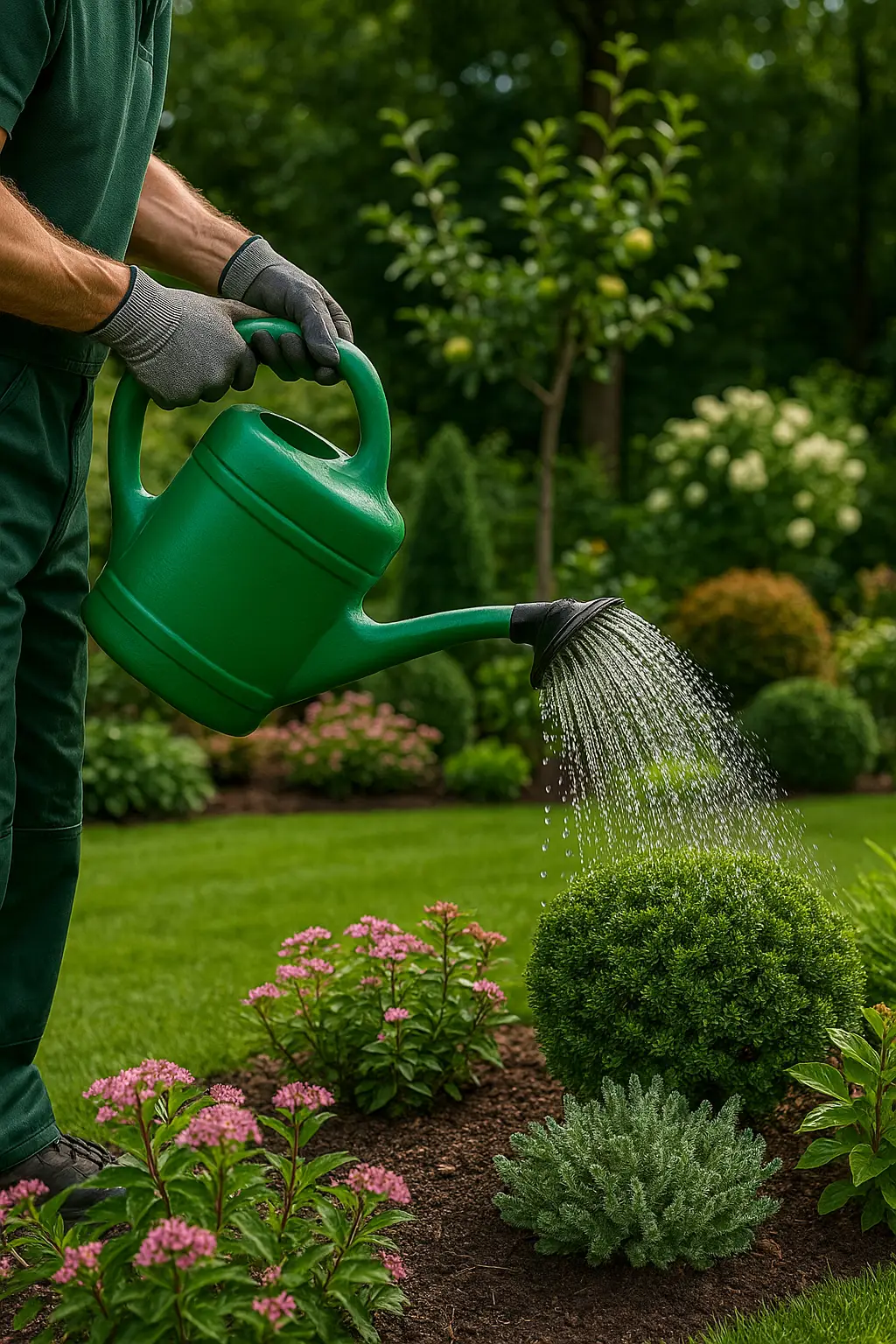
Doing it all yourself is admirable—but not always effective.
Trees and shrubs need expert care to prevent slow damage or dangerous structural issues.
Fertiliser and pest treatments, if applied incorrectly, can have unintended consequences.
Inconsistent watering leads to more stress than skipping it altogether.
Hiring Troutbrook Arborists means:
Consistent, tailored maintenance
Fewer costly mistakes
Protection for your landscape investment
Peace of mind during every season
And because we’re local, we know how Connecticut’s soil, sun, and storms affect your yard—down to the specific plants and pests that live here.
💡 Bonus: Our team is fully licensed and accredited—so you’re working with certified professionals, not guesswork.
4.9 208 reviews
Your yard deserves more than survival this summer—it deserves to thrive.
Whether you’re struggling with patchy grass, wilting plants, or stressed-out trees, Troutbrook Arborists has the tools, training, and local experience to help.
📞 Don’t wait for things to die back—request a quote today and get expert summer lawn and garden care that lasts.
From small plants to large trees, we help West Hartford landscapes look their best—season after season.